© 2018 Dr. M. Sheppard
Family Yard - Lwa-Lapa
Lwa-
1. The whole area or yard in which a family build their houses in their sub-
2. The mud-
Building a lwa-lapa

On a new house the lwa-
Such walled areas are often originally built and/or re-



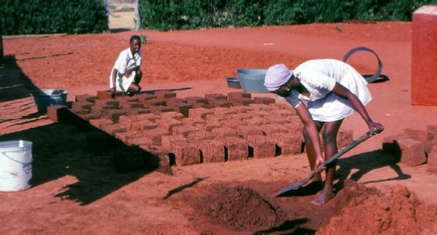
The bricks are made as for a house -
The the foundation layer of the walls is carefully laid out to provide a firm and straight base -
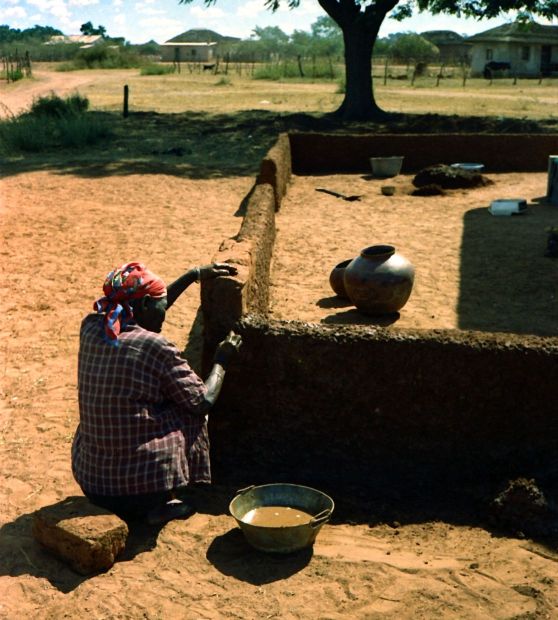 .
.
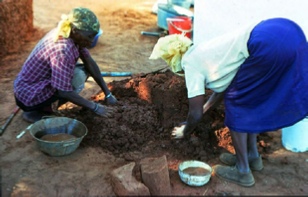

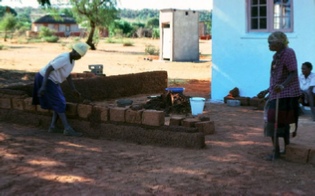
The cattle dung and mud is well mixed
Double checking the base layers are straight so that the walls will remain strong
“Cementing” the bricks together with mud and cattle dung mixture
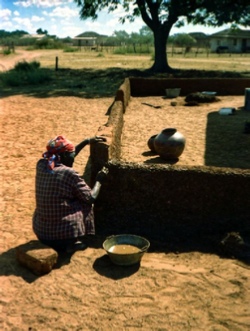
Again checking walls are straight

Gradually building up the courses -
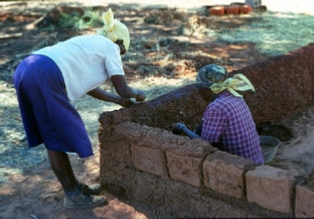


When the walls are the required height, they are “plastered” with the mud and cow dung mixture inside and out to provide strength. First a rough finish then a smooth top coat
Decorating
Finally the walls are finished with decorations from different coloured locally available clays which are mixed with cattle dung to stop the decorations spoiling during the Rains
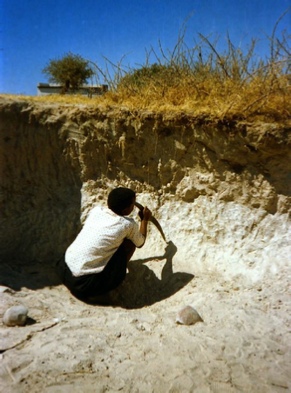

Obtaining the colours for the decorations.
There are other areas for obtaining the yellowish colour for decoration.

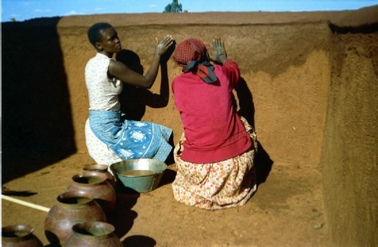

This curved topping helps to protect the durability of the wall. Here it is then being decorated with the white mud mixture
Various layers of plastering over the brick base help to strengthen the wall


A Ruler for the straight lines and a small pot lid as pattern for the circles



Final finish with the red mud to show off the decorations
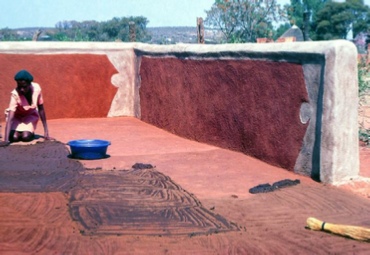
Floor of lwa-

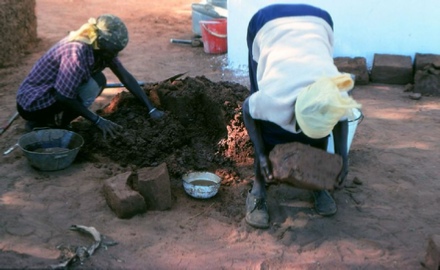
Breaking up a brick to fit the dimensions of the wall. The other lady to the left is mixing the mud and cattle dung mixture to the required consistency with the household waste water
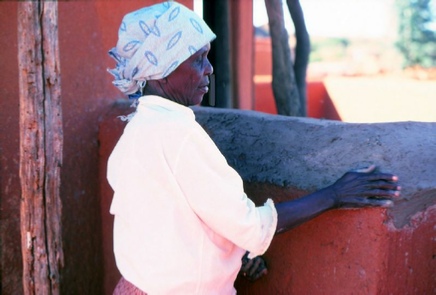

The walls also need annual refurbishment. This maintenance can only be done during the dry season between harvest and the new Rains. This is the time of the year when families reside in their village homes until the next ploughing season. (See Sections on the Lands)